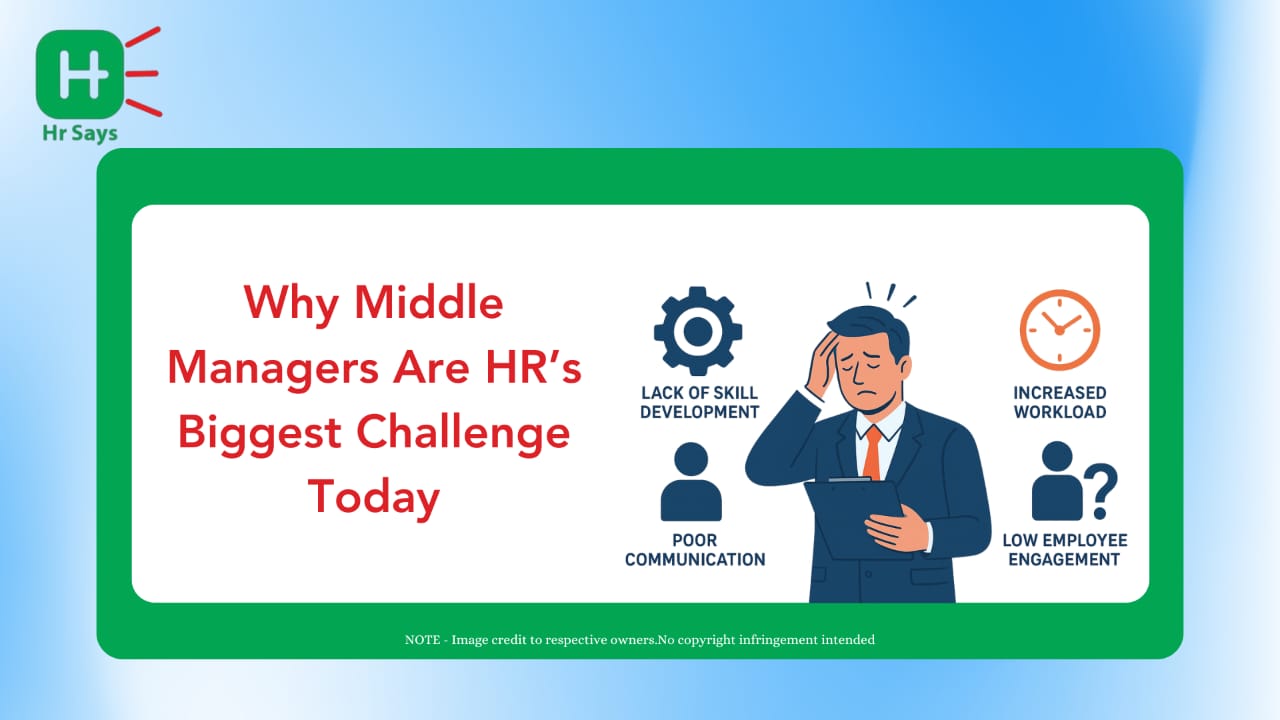Ever asked yourself what the middle managers are always in the middle of the place of most (workplace) fights? They are in between the highest leadership and workers even though they are caught in between. To HR professionals, this has been unofficially the most difficult level of management to deal with; as well as, to correct.
The Pressure Cooker Role of Middle Managers
The middle managers have a lot of responsibility. They model leadership strategies into team activities as they ensure the day to day performance, morale, and culture are managed. However, there are those who are in between expectations and implementation.
They face:
● Burnout from managing both upwards and downwards
● Confusion due to unclear leadership goals
● Low motivation from limited recognition and growth opportunities
● Resistance to new HR initiatives or organizational changes
For HR, this means constant balancing—supporting managers without losing focus on employee engagement and company vision.
The Communication Gap That Worsens Everything
Poor communication often fuels the conflict between HR and middle managers. When policies or culture shifts are introduced, HR expects managers to communicate and implement them effectively. But often, the messages get diluted, misinterpreted, or simply lost.
This disconnect affects:
● Employee trust in management
● Consistency in HR policy implementation
● Feedback loops between departments
It’s not always incompetence. Many managers lack training in people management, emotional intelligence, and conflict resolution—all critical HR skill areas that go beyond technical know-how.
Why HR Struggles to Engage and Empower Them
HR departments often focus more on leadership development at the top or employee welfare at the bottom, unintentionally leaving middle managers out. This creates a developmental vacuum. These managers are expected to drive engagement, handle performance reviews, and navigate employee relations—but with little guidance.
Moreover, middle managers are often:
● Stuck in outdated leadership styles
● Unclear about HR’s changing priorities
● Hesitant to adopt digital HR tools or data-driven processes
This lack of alignment causes frustration and slows down HR’s strategic goals like talent retention, organizational agility, and workplace innovation.
Building Stronger Bridges Between HR and Middle Managers
So, what can HR do differently? The solution lies in reframing the partnership between HR and middle management. Instead of just compliance, HR needs collaboration.
Here’s how:
● Create tailored learning programs focusing on leadership communication and adaptability
● Encourage open dialogue between HR, managers, and teams
● Offer coaching support to help them manage workplace conflicts better
● Recognize and reward middle management contributions regularly
When HR positions itself as an ally rather than an enforcer, middle managers become more receptive, engaged, and aligned with the organization’s mission.
Conclusion
Middle managers may be HR’s biggest challenge today, but they’re also its greatest opportunity. With the right support and recognition, they can become the strongest link between strategy and people. Empowering them doesn’t just ease HR’s burden—it strengthens the entire organization.

 Middle managers often face the toughest challenges in organizations. This blog explores why
they’ve become HR’s biggest concern today, highlighting communication gaps, burnout, and
lack of training—and how HR can rebuild stronger collaboration and trust.
Middle managers often face the toughest challenges in organizations. This blog explores why
they’ve become HR’s biggest concern today, highlighting communication gaps, burnout, and
lack of training—and how HR can rebuild stronger collaboration and trust.












.jpeg)












.jpeg)